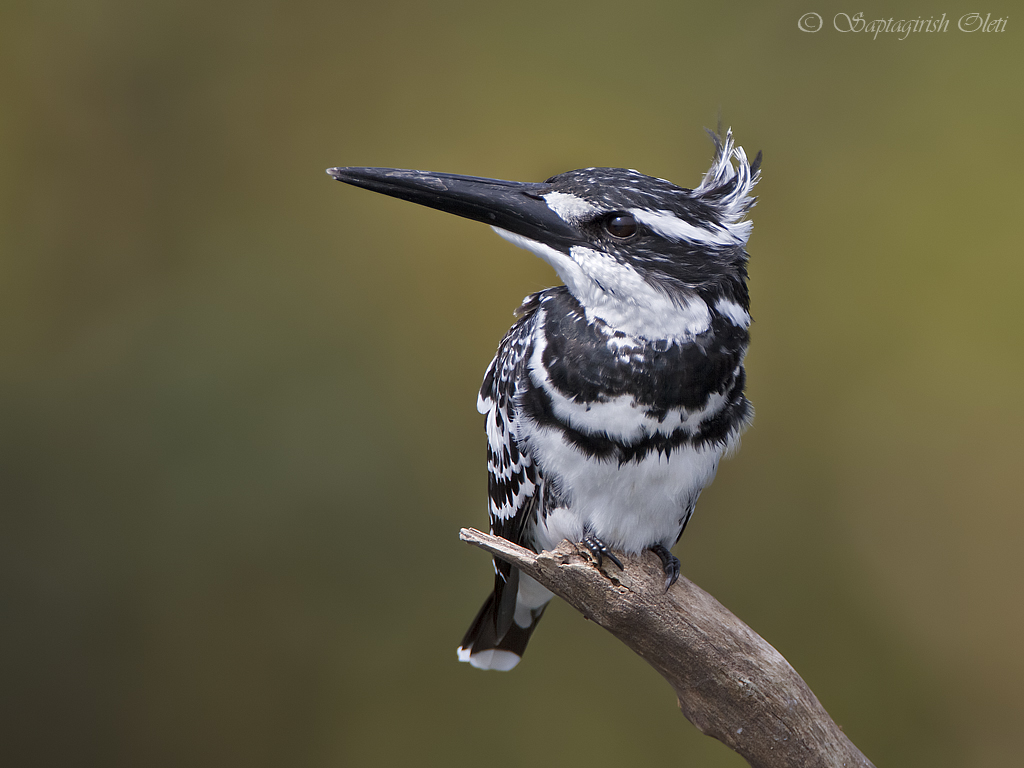
Ceryle rudis
SUBFAMILY
Cerylinae
TAXONOMY
Alcedo rudis Linnaeus, 1758, Egypt. Four subspecies.
OTHER COMMON NAMES
English: Lesser/small/Indian pied kingfisher; French: Martinpкcheur
pie; German: Graufischer; Spanish: Martin Pescador Pie.
PHYSICAL CHARACTERISTICS
10 in (25 cm), 2.4–3.9 oz (68–110 g). Medium-sized kingfisher
patterned in black and white. Black crown and broad mask distinctive,
with double (male) or single (female) black band
across white underparts. Very long black bill.
DISTRIBUTION
Sub-Saharan Africa, through Middle East, India, and Asian
mainland to southern China.
HABITAT
Mainly large rivers, estuaries, and lakes, but from seashores to
8,200 ft (2,500 m) above sea level, also streams, ponds, and irrigation
ditches. Absent from center of large swamps.
BEHAVIOR
Often perched on waterside vegetation or lookouts, rarely on the
backs of hippos. Regularly bobs head or pumps tail. Noisy, with
variety of shrill trills and chirps, uttered at perch or in flight.
FEEDING ECOLOGY AND DIET
Perches wherever possible, to save energy, but hovers in search
of prey more than any other kingfisher, especially under windy
conditions. May then dive to 18 in (45 cm) below the surface
and forage up to 2 mi (3 km) from shore, where it swallows
prey in flight rather than return to a perch. Diet mainly small
1–2.4 in (25–60 mm) fish, supplemented by aquatic insects and
crustacea. Eats few amphibians and mollusks, even insects
taken ashore or in the air.
REPRODUCTIVE BIOLOGY
Monogamous pair excavates a nest tunnel in an earth bank,
alone, or in colony of up to 100 pairs where nest sites limited.
Normal clutch four to five eggs, incubation 18 days, nestling
period 23–26 days. Sexes share nest duties, often assisted by a
son from a previous brood and, especially in feeding chicks, by
unrelated males.
CONSERVATION STATUS
Not threatened. Widespread and common, locally even abundant.
The most numerous kingfisher in the world. Benefited
in many areas from artificial dams and fish farming or stocking
activities. Suffers locally from water pollution and use of
pesticides.
SIGNIFICANCE TO HUMANS
None known.
Other popular Animals
Photo Gallery of - Pied kingfisher
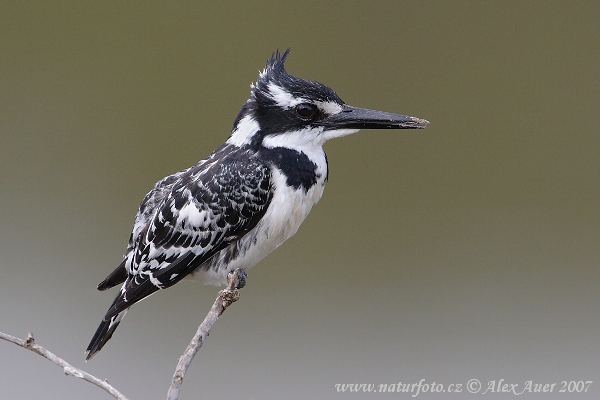
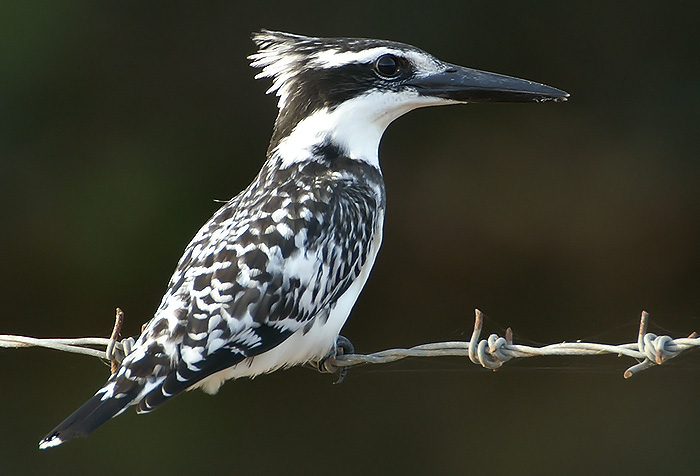
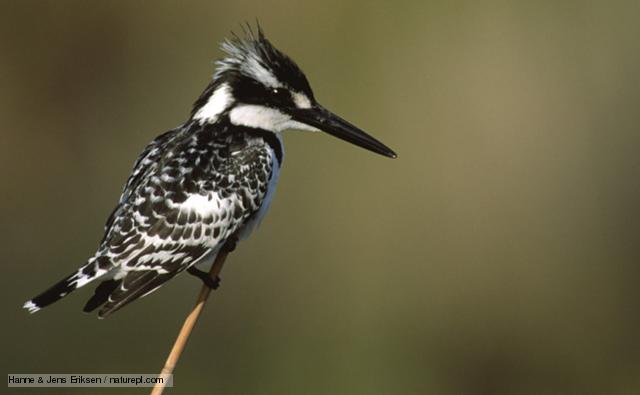
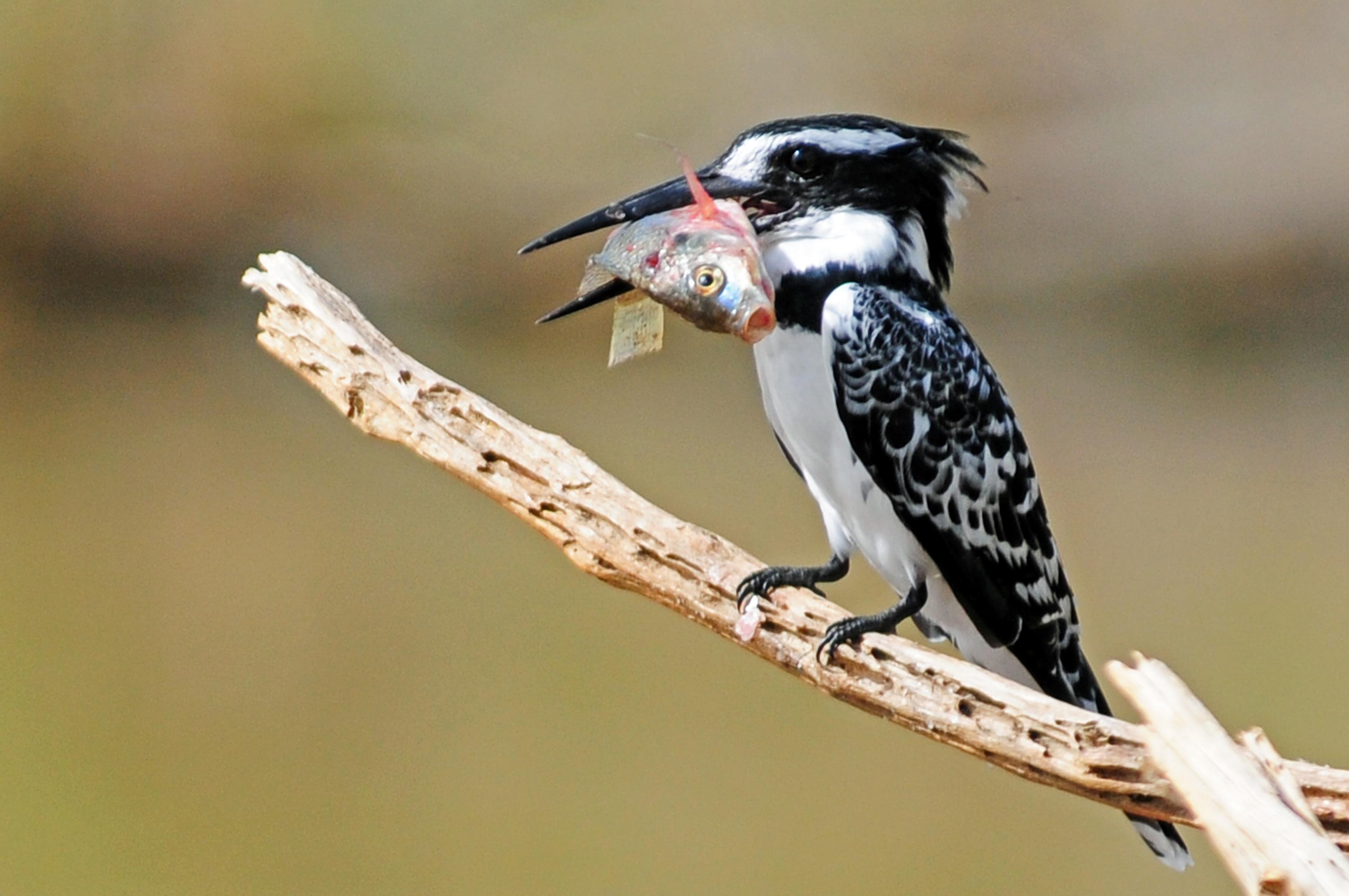
 Animalia Life
Animalia Life